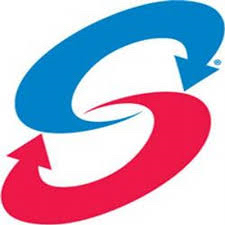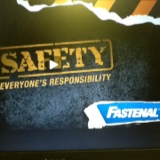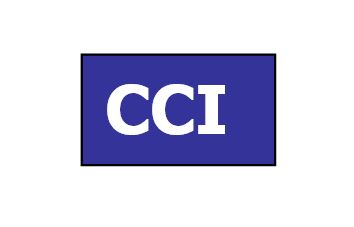Title Page
-
Site conducted
-
Conducted on
-
Prepared by
-
Location
Untitled Page
GENERAL FACILITY
-
Aisles and floors free of slip and trip hazards<br>
-
Corners, out-of-way places clean and orderly
-
Work places, tables, and benches clean and orderly
-
Desks, files, supervisor's areas, office neat
-
Wash rooms and fountains clean and sanitary, disposal containers adequate
-
Hand soap or other cleaning agent and warm water provided
-
Hand towels or some other means of drying hands available
-
Restroom has sanitary toilet seat cover and adequate toilet paper
-
Sidewalks and parking lots in good condition (walking surface, holes, ice)
-
Employee break areas clean and orderly
Require Safety Communication Postings
-
Company Health and Safety Policy current and posted? ( IIPP)
-
Are regulatory posters current and posted (WCB/WSIB, OHS)?
-
Company H&S documentation posted (Newsletter, etc)
-
CA Locations - Prop 65 Warning Accurate and posted
-
Site Map with Evacuation and Rally Point posted
-
Emergency Contacts and Emergency Services/Response posted
-
Bench Grinder Operating Instructions posted
-
Forklift Operating Instructions
-
Safety data sheets up to date & available to employees (post phone number, website to access)
-
Hazardous materials properly labeled
-
Piping systems labeled
-
Safety Rules / Code of Safe Practices posted and enforced
-
Hazard Communication Program current and accessible to employees
Fire Prevention, Emergencies and Exits
-
Exits and aisles leading to exits visible, clearly marked, kept clean and with a pathway of at least 28 inches wide
-
Non-exits properly labeled
-
Exit signs illuminated and tested
-
Extinguishers provided and checked Monthly, training conducted with all persons expected to use extinguishers
-
Accessibility of fire extinguishers ( easily accessible and identified )
-
Hoses, sprinkler heads and valves unobstructed
-
The minimum vertical clearance between automatic sprinklers & material below at least 18 inches
-
Flammable liquids stored in approved safety can/cabinet, with self closing doors/ lids
-
No oxidizing materials stored in Flammable liquids cabinet
-
Test emergency lighting equipment as required
-
Test fire/security detection/protection devices as required
-
Fire doors kept closed at all times. ( most office doors are designated as fire doors)
-
"No Smoking" signs posted in required areas
-
No Smoking rules/regulations enforced
-
Emergency valves / switches clearly marked and accessible
Lights and Ventilation
-
General lighting adequate and working properly. Fluorescent tubes have protective sleeves
-
Task lighting adequate
-
Ventilation system adequate and working properly.
-
Emergency lighting in place and working.
-
Air recirculating systems inspected on a regular basis
Walking and Working Surfaces
-
Floor openings and platforms or workstations 48 inches or higher guarded by a cover, a guardrail (top rails must be a minimum of 42" with a mid-rail. 4" toe boards must be in place if potential for falling objects)
-
Grates or covers over floor openings such as floor drains, secured
-
Step risers on stairs uniform from top to bottom
-
Are steps on stairs and stairways provided with a surface that renders slip resistant? Handrails provided?
-
Aisles, stairs and passageways kept clear
-
Aisles clearly marked for pedestrian traffic
-
Wet surfaces cleaned up or covered with non-slip materials
-
Mirrors used at intersections/ warehouse and adjusted properly
-
Changes of direction or elevations readily identifiable (painted yellow - example)
-
Mezzanines marked with rating and not overweight
First Aid
-
Emergency eye washes and showers properly located, identified, inspected, (with tag) unobstructed, and training conducted.
-
Sufficient water pressure to eye wash and showers
-
First aid cabinets well stocked, clean & accessible, no items have expired use dates
-
Bloodborne pathogens kits available
-
First aid providers names/certificates posted - MRO Letter required
-
Medical waste container available
Trash Receptacles
-
Trash receptacles provided and used
-
Trash receptacles emptied regularly
Electrical
-
Electrical boxes provided with required covers ( all open spaces are have block outs)
-
Temporary wiring in safe condition
-
Temporary wiring only used on temporary projects
-
Permanent wiring in safe condition No open or exposed plugs or wires, all wires are protected from abrasion.
-
Electrical panels closed when not being accessed .
-
Electrical rooms are kept locked
-
Electrical panels unobstructed must be clear for 30" wide and 36" to the front
-
All disconnects must be clearly labeled, and legible.
-
Power tools grounded or double insulated ( 3 prong )
-
All electrical outlets marked for Voltage ( Over 110 Volts )
Yard
-
Are spill kits readily available (training conducted and procedures posted)
-
Yard is clean; rack aisles clear, free from debris etc
-
Yard lights are working
-
Fencing is in good condition and free from debris
-
Propane exchange area has appropriate PPE ( cryogenic gloves and apron, face shield, safety goggles)
-
Propane exchange and fueling area has protocol posted
Ladders and Elevated Platforms
-
Are portable ladders numbered and in good condition with slip proof feet and no cracks, paint or splinters on the rungs (inspected and steamed cleaned monthly)
-
Are fixed metal ladders painted or treated to resist corrosion & rusting
-
Is the fixed ladder's clearance distance at least 36 inches between the nearest permanent object and the centerline of the rungs
-
Is the fixed ladder's clearance distance at least 7 inches between the backside of the ladder from the center of the rung to the nearest permanent object
-
Does the ladder extend 3.5 feet above the parapet or landing
-
Elevated platforms (over 4 feet high) equipped with 42" railing, intermediate railing and toe boards
-
Head clearance (7' or more) provided from the floor to the ceiling
Personal Protective Equipment & Housekeeping
-
Safety glasses with approved side shields (meeting Z87.1 )
-
Proper safety boots worn (CSA approved)
-
Chemical resistant gloves worn where appropriate
-
Hearing protection properly used (when required and training conducted)
-
Hearing protection dispensers appropriately positioned (free from contamination?) 3 different styles available?
-
Bloodborne pathogens equipment available
-
Are respirators clean, properly stored, and respirator program in effect
-
Face shield properly used and appropriate for the task?
-
Are closed containers provided for soiled rag disposal and emptied daily?
-
Are unused portions of pits / loading docks and pits / loading docks not actually in use either covered or protected by guardrails or equivalent.
-
Other (Personal Protective Equipment)
Cranes, Hoists, & Slings
-
Is the rated load of the crane, hoist and sling (for each type of hitch) plainly marked on each component.
-
Are all functional operating mechanisms checked on a daily basis for maladjustment that could interfere with proper operation
-
Are lines, tanks, valves, drain pumps and other parts of the air or hydraulic system inspected daily
-
Does rope reeving comply with manufacturer's recommendations
-
Is a Chain, Sling and Hoist inspection program implemented
-
Are cranes used only by designated personnel in accordance with their rated load and operation specifications with brakes tested each time a load approaching the rated limit is handled
-
Is each sling in use free from excessive wear or defects and securely attached to their load when in use
-
is training conducted at least annually
-
Is annual certification being conducted on hoists, cranes rated over 2 tons
-
The overhead hoist has a warning device for each crane equipped with a power traveling mechanism
Electrical and Fire Safety
-
Are combustible liquids (fuels, lubes, solvents, paints etc.) stored in non-combustible cabinets with self-closing doors.
-
Are flammable liquids contained in approved safety cans and (except aerosol cans) stored in a fire resistant cabinet
-
Are Class 1 liquids dispensed into containers after the nozzle and container are electrically grounded
-
Are electrical circuit breakers (and fuel pump switches) identified and labeled and are outlet boxes in good condition
-
Do electrical cords, extension cords, and trouble lights have approved 3-wire ground type and in good condition
-
Is pressure washer in good working order (hoses, vent and fuel lines)
-
Is "Eye Protection Required" sign posted
-
Are overhead doors and controls in good working order
Welding, Cutting, Burning, Brazing
-
Fire precautions being used (extinguisher nearby)
-
Personal protective equipment used
-
Electrodes removed/gas valves closed when not used
-
Welding curtains used
-
Welder cables, clamps and guards in good condition and are torch hoes, regulators and valves equipped with anti-flash back valves
-
"Hot Work Permits" used or is welding conducted in designated areas, at least 35 feet from combustible materials, spray painting, etc.
-
Are fire watch employee(s) required whenever welding or cutting is performed in location where other than a minor fire might develop, and the fire watch maintained for at least 1/2 hour after completion.
-
Compressed gas cylinders stored and secured properly (double chained and protected from any heat source)(sunlight)
Compressed Gas Cylinders
-
Cylinders legibly marked and labeled to clearly identify the gas contained
-
Oxygen or Argon & acetylene tanks stored properly and secured, separated by 20 feet or with a 5 foot high fire resistant wall between oxygen and fuels
-
Cylinders stored in areas that are protected from heat and flame and located at least 25 feet from electrical equipment and people and at least 20 feet from flammable liquids or combustible materials
-
Cylinders transported in a manner to prevent then from creating a hazard by falling or rolling
-
All valves are closed off before a cylinder is moved, when the cylinder is empty, and at the completion of each job and are valve protectors used when cylinders are not in use.
Machine Guarding
-
Are saws equipped with anti-kick back devices and spreaders
-
Are radial arm saws so arranged that the cutting head will gently return to the back of the table when released
-
Power machines, shears, grinders, saws, drill presses etc properly anchored and guarded with "Eye Protection" signs posted
-
Do fixed grinders have side guards that cover the spindle, nut, and flange and 75% of the wheel diameter, a tool rest adjusted to within 1/8" and a tongue guard adjusted to within 1/4" of wheel
-
Before new abrasive wheels are mounted, are they visually inspected and ring tested
-
Are splash guards mounted on grinders
Hand Tools, Power Operated Tools & Equipment
-
Are all tools and equipment in good condition and used with the correct shield or guard or attachment recommended by the manufacturer <br>
-
Are appropriate handles used on files and similar tools
-
Are tool cutting edges kept sharp so the tool will move smoothly without binding or skipping
-
Are rotating or moving parts of equipment guarded to prevent physical contact
-
Are all cord connected, electrically operated tools and equipment effectively grounded or of the approved double insulated type
-
Are ground fault circuit interrupters provided on all temporary electrical 15 and 20 amperes circuits, used during periods of construction
-
Are pneumatic and hydraulic hoses on power operated tools checked regularly for deterioration or damage
-
Do all air hose ends have restraining devices on the quick release side? ( not applicable on hose reels )
-
Are all air outlets regulated at proper PSI for tool being use (usually 90 PSI or Less)
-
Have all personnel using Pneumatic tools been trained on regulator use.
Material Handling and Storage
-
Where mechanical handling equipment is used, are there sufficient safe clearance allowed for aisles, at loading docks, through doorways and wherever a turn or passage must be made (doorways must be marked for height)
-
Are the aisles-ways and passageways kept clean and in good repair and are there no obstructions across aisle-ways that could create a hazard.
-
Storage of material does create a hazard - stacked, blocked, interlocked and limited in height to ensure they are stable and secured against sliding or collapse - Verify all floor stacking and rack stacking pallet condition
-
Are storage areas kept free from accumulation of materials that constitute hazards from tripping, fire, explosion or harborage of pests
Powered Industrial Trucks
-
All nameplates and markings in place and legible on powered industrial trucks and visible from the driver's seat.
-
Industrial trucks kept in a clean condition, free of lint, excess oil/grease
-
Is directional lighting provided on each industrial truck
-
Does each industrial truck have a warning horn or other device that can be clearly heard above the normal noise in the areas where operated
-
Does each industrial truck have a reverse signal alarm audible above the surrounding noise level
-
Are the brakes on each industrial truck capable of bringing the vehicle to a complete and safe stop when fully loaded and does the parking brake effectively prevent the vehicle from moving when unattended
-
Are industrial trucks when found to be in need of repair, defective or in any way unsafe taken out of service and repaired by an authorized mechanic using replacement parts and handling clean, free from combustibles
-
Are fuels storage and handling clean, free from combustibles and cigarette butts and is there always metal contact between the container and the fuel tank and are fuel tank caps replaced and secured before starting the engine
-
Are precautions taken to prevent open flames, sparks or electric arcs in battery charging areas
-
front Guard in place to prevent operator from pinch point? Not welded to overhead guard.
-
Are industrial trucks with internal combustion engines, operated in buildings or enclosed areas, carefully checked to ensure such operations do not cause harmful concentrations of dangerous gases or fumes
-
Are industrial trucks driven by authorized personnel only
-
Do personnel stay clear of the elevated portion of the trucks whether loaded or empty
-
Are DEI (Daily Equipment Inspections) conducted each day on each piece of equipment prior to operation
-
Are industrial trucks left in an "off" position when unattended or when the operator is more than 25 feet from the vehicle
-
Are loads only handled within the rated capacity of the truck and is the backrest extension used when necessary to stabilize the load
-
Are industrial trucks operated at safe speeds and stopped with the horn sounded at across aisles and other locations where vision is obstructed
-
Are the brakes of highway trucks set and wheel chocks placed under the rear wheels while trucks are boarded with industrial trucks
-
Forklift extenders do not exceed 1.5 times the length of the forks and must be able to support an evenly distributed load of three times its rated capacity. And the rated load center equals 50% of the fork extension’s load supporting length
-
Are fixed jacks used to support a semi trailer during loading and unloading when the trailer is not coupled to a tractor and wheels chocked.











